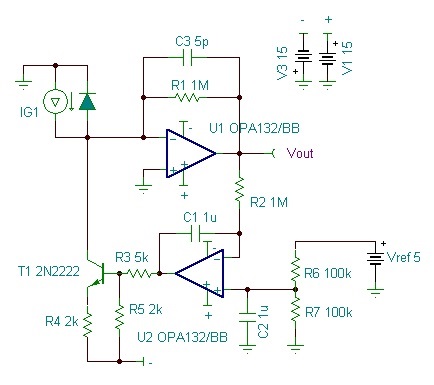Hi,
I am trying to build a portable infrared reflection analysis device, capable of identifying different reflectivity surfaces located a couple of cms in front of a IR Led and photodiode.
In order to avoid interference (sun or bulb light), I am generating an AC signal of 35kHz from the LED and trying to measure the light reflected with the photodiode.
I have read that the photovoltaic configuration is more suitable for slower but where more precision is required (low noise). Moreover, the photovoltaic configuration consumes less power and is linear, however I tried to run different topologies without any good results even on DC drive of the LED (Ex. figure 2 of document focus.ti.com/lit/an/sboa061/sboa061.pdf)
The only configuration that seems to work in the simulation and protoboard is the transimpedance amplifier with the photodiode in Conductive Mode for DC and AC.
My LED is Everlight IR204 and the photodiode is Everlight PD438B.
Any help or suggestion will be appreciated!
Different topics I read:
http://e2e.ti.com/support/amplifiers/precision_amplifiers/f/14/p/182579/658369.aspx
http://e2e.ti.com/support/amplifiers/precision_amplifiers/f/14/t/96946.aspx
http://e2e.ti.com/support/amplifiers/precision_amplifiers/f/14/t/167369.aspx
Thank you!
-
Ask a related question
What is a related question?A related question is a question created from another question. When the related question is created, it will be automatically linked to the original question.



